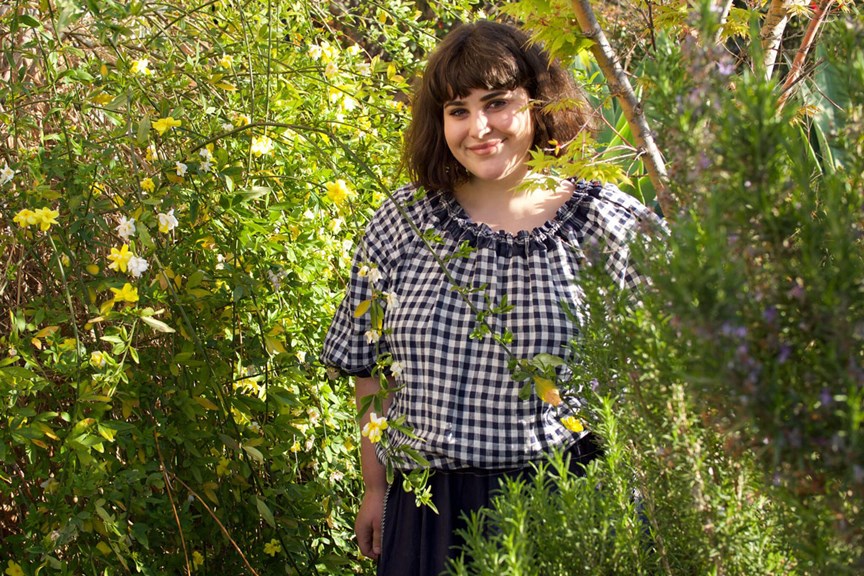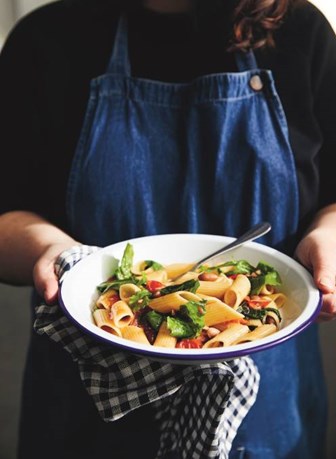Grow Gather Share
The Grow Gather Share project celebrates locally grown food and the diversity of food cultures in Victoria, proudly supported by VicHealth.
We share stories of people in their home or community gardens, people using recipes passed down through generations, and people working towards healthy and sustainable ways of producing, purchasing and consuming food.
Cooking with Julia Busuttil Nishimura
Find out what has helped Melbourne-based cook, author and teacher Julia Busuttil Nishimura and her son Haruki stay healthy, nourished and connected recently. Julia's food celebrates simple ingredients and seasonal produce, influenced by her Maltese upbringing and time living in Italy.
What have you grown, gathered and shared this year?
And what are you hoping to continue with for the future?
Share your thoughts, food or garden creations and videos – on Immigration Museum’s Facebook or Instagram with the #growgathershare hashtag.
About Grow Gather Share
Through exhibitions, talks, workshops and our communal garden, the Grow Gather Share project celebrates the diversity of gardening and food culture in Victoria.
In a multicultural city like Melbourne, our backyards, balconies, nature strips and communal gardens reflect our diversity, whilst bringing us together as communities.
And in challenging times, the growing, gathering and sharing of nutritious food with our family, friends and community is more important than ever. Locally produced food can play a significant role in ensuring we all can access affordable, culturally appropriate and healthy food now and into the future.
Borlotti Bean, Tomato and Rocket Pasta
From A Year of Simple Family Food (2020) by Julia Busuttil Nishimura
Serves 4
When fresh beans are abundant and tomatoes are still around and very sweet, a quick pasta like this is perfect. It’s one of my favourite combinations and is simple enough to throw together during the week without much forethought. Although canned or dried beans can be substituted here, it is well worth using fresh ones if they are available. Podding the beans is actually rather pleasant and meditative. The fresh beans are beautifully flecked, looking almost as if they have been painted. Even though this colouring disappears once cooked, it is lovely to appreciate their fleeting beauty.
Ingredients
300 g podded fresh borlotti beans (about 500 g unpodded; see Note)
4 garlic cloves, 1 peeled and left whole, 3 roughly chopped
1 fresh bay leaf
2 tablespoons extra-virgin olive oil, plus extra to serve
250 g cherry tomatoes, halved
sea salt
1 tablespoon pitted small black olives (I use taggiasche)
320 g dried short pasta, such as penne, rigatoni or farfalle
large handful of rocket, roughly chopped (see Note)
handful of basil leaves
40 g parmesan, grated
Method
Step 1: Place the beans, whole garlic clove and bay leaf in a large saucepan and cover with water. Bring to the boil, then reduce the heat and and simmer for 30–40 minutes until very tender.
Step 2: Drain, discarding the garlic and bay leaf. Meanwhile, warm the olive oil in a large frying pan over a low heat and gently sauté the chopped garlic, just for 30 seconds until aromatic.
Step 3: Add the cherry tomatoes along with a pinch of salt and cook until the tomatoes are beginning to soften and create a sauce. Add the cooked beans and the olives and stir to combine.
Step 4: Meanwhile, cook the pasta in a large saucepan of salted boiling water for a few minutes less than directed on the packet instructions. Drain, reserving 250 ml (1 cup) of the cooking water.
Step 5: Tip the pasta into the sauce, along with the rocket and basil. Increase the heat to medium and add most of the cooking water.
Step 6: Stir so that everything is well coated and simmer for 1–2 minutes, or until the sauce has thickened and the pasta is al dente. If the sauce begins to look dry, add the remaining cooking water. Stir through the parmesan and serve with an extra drizzle of olive oil.
NOTE: If you prefer, you can use spinach leaves instead of rocket. If you can’t find fresh borlotti beans, use 100 g dried beans, soaked overnight and drained, or 400 g canned cooked borlotti beans, drained and rinsed. Boil the soaked dried beans as you would the fresh ones, but if you are using canned beans, drain and rinse them before adding to the sauce in the second step.


